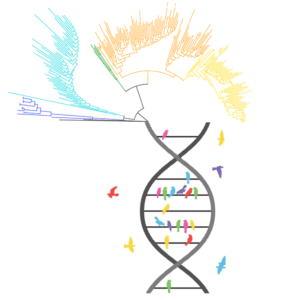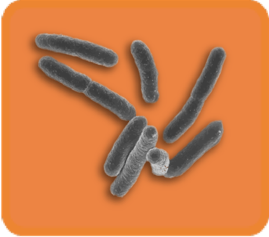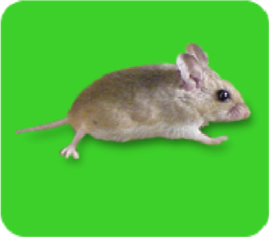Phenotypic Evolution

Phenotypic evolution is defined as a change in the frequency of alleles in a population over time that results in a change in the distribution of phenotypic traits in that population. A phenotypic trait is an observable and measurable characteristic possessed by an organism. Although evolution is defined by changes in allele frequencies, the process of natural selection can only act on the phenotypic expression of these alleles. Since the genotype (i.e., the allelic make-up) of an individual partially determines the expression of phenotypic traits, understanding the process of evolution via natural selection requires tracking traits from their origination in DNA mutation, to the production of different proteins, to the fixation of alternate macroscopic phenotypes in reproductively isolated populations. The purpose of our phenotypic evolution cases is to help students learn about the various sub-disciplines of biology in an integrative manner, with an emphasis on evolution as the unifying theme of the life sciences. Below are short abstracts of each phenotypic evolution case along with links to PowerPoint slides, question guides, games and sims, and videos to support each case.
Clam Toxin Resistance
Soft shell clams (Mya arenaria) are bivalves native to the east coast of North America. They are susceptible to paralytic shellfish poisoning caused by a poison, saxitoxin, that is produced by dinoflagellates during algal blooms. However, some clams have a nucleotide substitution mutation in a voltage gated sodium channel gene that makes them resistant to saxitoxin poisoning. This case examines the genetics, cell biology, ecology and population genetics of this system.
Bacteria Citrate Use
Since 1988, Dr. Richard Lenski has been conducting a long-term evolution experiment using the bacteria E. coli. Sixteen years into his experiment, one of his twelve identical-but-separate E. coli colonies spontaneously evolved the ability to digest citrate under aerobic conditions. This case examines the genetics, cell biology, ecology and phylogenetics of this system.
Human Skin Pigmentation
Human populations display a continuous palette of skin colors, with ancestral populations near the equator having darker skin and those evolving at higher northern latitudes having lighter skin. This case addresses the distribution of skin color in terms of natural selection and population genetics. Key genes and proteins for the synthesis and regulation of pigments are examined, with the complexity of a polygenic characteristic, such as skin color. Additionally, both the biological and societal notions of race, often based on skin color, are introduced
Mouse Fur Color
The beach mouse, (Peromyscus polionotus) is a small rodent found in southeastern United States. There are several sub-species that have different fur colors ranging from light to very dark. Beach mice with light fur often have a single nucleotide substitution mutation in their melanocortin 1 receptor gene that affects their ability to produce the dark fur pigment eumelanin. This case examines the genetics, cell biology, ecology and population genetics of this system.
Monkey Opsins
Some monkey species have trichromatic, full color vision whereas others have dichromatic, red-green colorblind vision. Trichromatic monkey species can produce three types of transmembrane opsin proteins in the cone cells of their eyes; dichromatic monkey species only produce two types. This case examines the genetics, cell biology, ecology and phylogenetics of this system.
Garden Pea Taste
The common field pea (Pisum sativum) is one of the first plants to be domesticated as a crop, dating back to the Neolithic agricultural revolution, 10,000 BCE. They are the same species that Gregor Mendel, the father of modern genetics, used in his experiments when he discovered the laws of genetic inheritance. Wrinkled peas are sweeter than round peas because, as a result of an insertion mutation, they lack a functional starch branching enzyme. This case examines the genetics, cell biology, Mendelian connections, and population genetics of this system.






